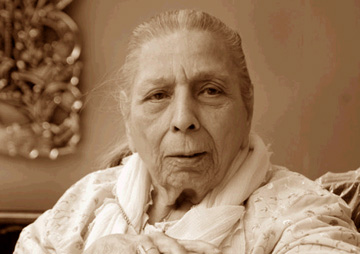
Who could have imagined, that the child who was discouraged to study music by her father , would go on to become one of India’s leading Bollywood singer?
It was the ‘queen of melody’ Shamshad Begum who conquered million hearts with her mellifluous voice. An artist extraordinaire, she also received the prestigious Padma Bhushan award for her exceptional contribution to music industry.
Even as a little girl of 13, Shamshad ji, went to the music studio’s wearing a burqa. The traditional little girl introduced music lovers to some of the most modern rhythms in the early forties itself. Though she initially began with singing for the All India Radio, it took no time for her voice to reach the film industry. And there began the melodious journey of songs like ‘Kabhi Aar, Kabhi Paar’, ‘Mere Piya Gaye Rangoon’ or one of my personal favorites ‘Sunday Ke Sunday’.
Shamshad Begum, who with her bold, bright and boisterous singing went on to become the leading and the highest paid numero uno star singer of the forties and acquired the legendary status in the dawn of her career.
…….Manohar Iyer
Even though she became a singing sensation at a very early age, she could never pursue her dream of being an actress due to her conservative background.
On screen, or off screen Shamshad Begum would always be a star for her listeners.
|
Shamshad Begum was the queen of Bollywood in the 40s. Lata ’s arrival was a turnaround from Begum’s open voice and music directors now got the opportunity to create compositions since they had found a musical voice. Here’s a small excerpt which narrates this turnaround in the music industry:
“Once Masterji (Ghulam Haider) was working all night at Bombay |
